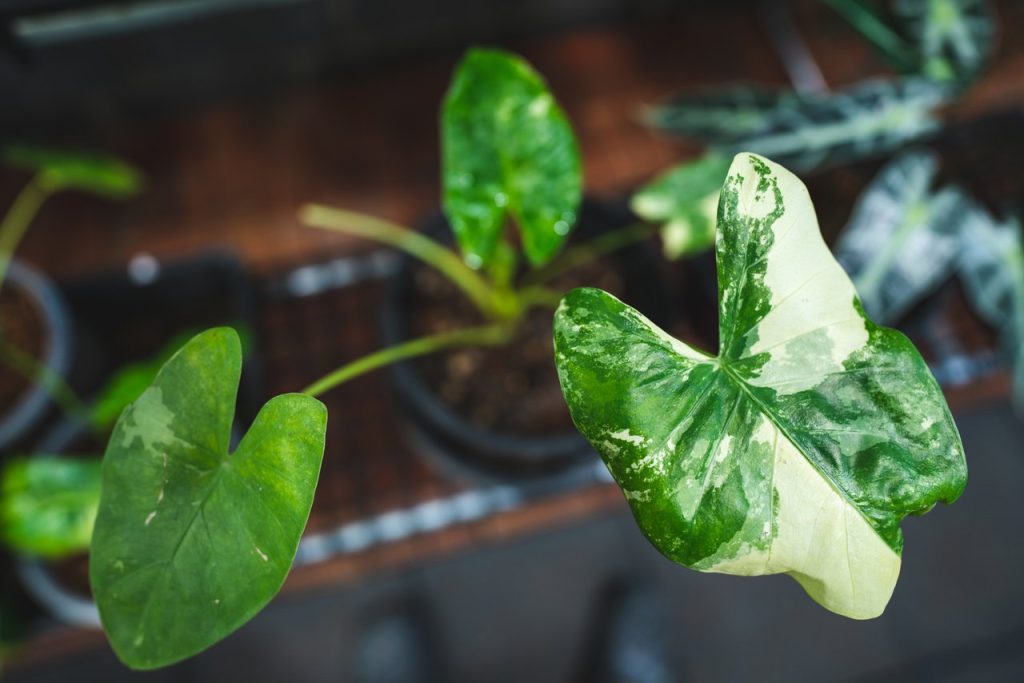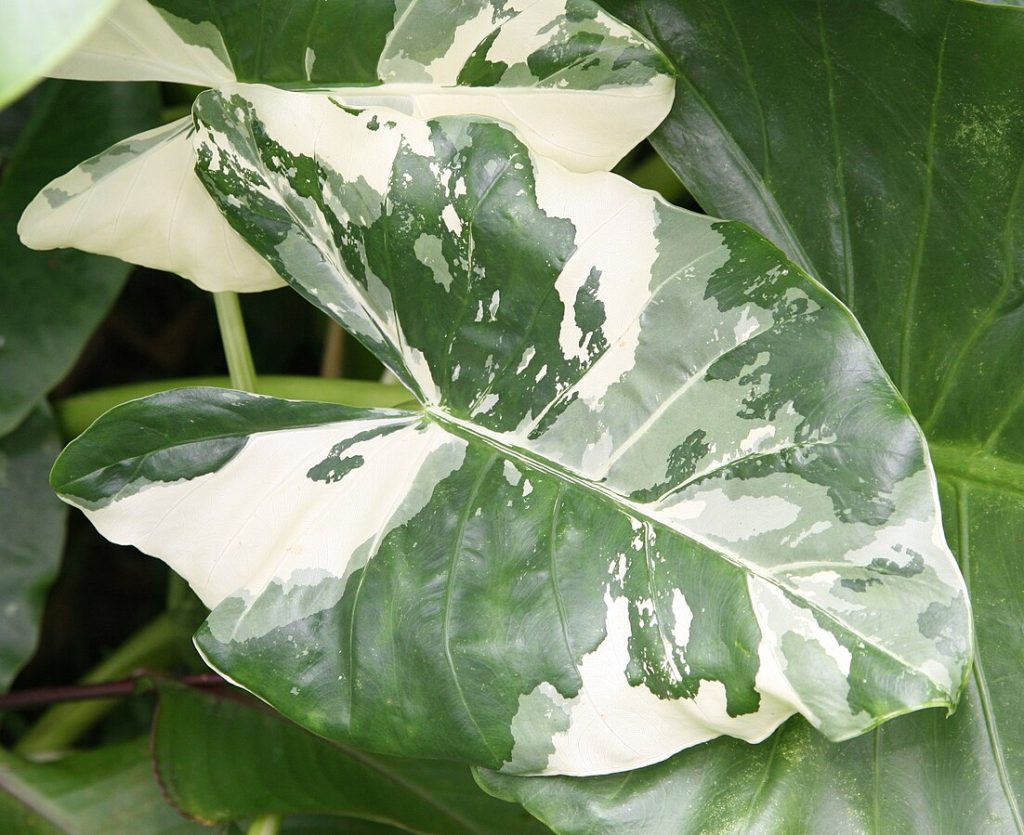Variegated Alocasias are highly prized by plant collectors thanks to the stunning contrasted patterns their leaves produce. Unfortunately, vareigated alocasia often revert, meaning they lose their variegation and revert back to their original green color.

Variegation in plants is often caused by a genetic mutation that affects the production of chlorophyll in some areas of the plant’s leaves. Generally speaking, variegation in plants is not stable. This means that the variegation may revert back to green under certain circumstances, and that the variegation may not be passed on to the plant’s offspring.
When a variegated Alocasia plant reverts, it means that the genetic mutation that caused the variegation has been suppressed, and the plant’s cells are now producing chlorophyll uniformly throughout the leaves.
Reversion usually occurs due to environmental factors such as low light or stress. Variegation creates a disadvantage for plants, as less chlorophyll means less opportunity to convert sunlight into energy. When a variegated plant gets stressed, it might attempt to “heal” itself by reverting.

So why do alocasias seem to revert more frequently than other plants? It’s because of way they grow: Alocasias will sit dormant for part of the year—sometimes losing all their leaves—and then spring back into growth mode when the weather warms. The rapid and compressed growing period creates an opportunity for the plant to quickly push out all the “bad” variegation, and replace it with chlorophyll-filled leaves that will facilitate fast growth.
To prevent variegated alocasia plants from reverting, it is important to provide them with consistent and optimal growing conditions, including bright, indirect light and well-draining soil. Avoid overwatering or underwatering the plant and take care when pruning or handling the plant to avoid causing damage.
If your alocasia has reverted, chances are the variegation won’t come back. You can increase your odds by cutting the plant back to the corm and letting it re-grow entirely, or by harvesting any baby corms from the potting mix and plant them in the hope that they inherited some variegation.
